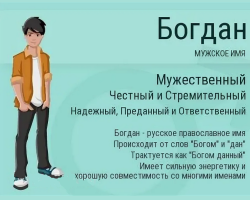If you have increased intracranial pressure, then read the article in which the information in which will help to reduce it.
Content
- What does “intracranial pressure” mean: what is it?
- Intracranial pressure: causes
- How to treat intracranial pressure?
- How to quickly reduce intracranial pressure in adults at home: what drugs?
- Vasodilating tablets: how to reduce intracranial pressure in adults?
- Antispasmodic drugs that reduce intracranial pressure: List
- Corticosteroid preparations that lower intracranial pressure: List
- Folk remedies that reduce increased intracranial pressure in adults at home: recipes, herbs
- How can I reduce intracranial pressure in a child?
- Products that reduce intracranial pressure: List
- Diacarb reduces intracranial pressure?
- How to reduce high intracranial pressure with diuretics: List
- Intracranial pressure: how to reduce without tablets?
- Video: how to reduce intracranial pressure
Doctors strongly recommend that you do not tolerate headache, as intracranial pressure can rise because of this. The leap of its indicators can lead to deplorable states of the body. The risk group is considered newborn children, adolescents and women. Pay attention, in particular, to your condition, if not only the headache is worried, but also other symptoms:
- Nausea
- Vomit
- Dizziness
- Leg and arms cramps
- Bad concentration of attention
- Forgetfulness
- Increased sweating
- Unreasonable nervousness
- Constant drowsiness
In this case, you must urgently consult a doctor. Read more about the symptoms of intracranial pressure read in another article on our website. In the following material, you will find a lot of useful information that will help if you are worried about increased intracranial pressure. Read further.
What does “intracranial pressure” mean: what is it?

Many people at the doctor’s appointment hear such a diagnosis as increased intracranial pressure. What does it mean and what is it? Here is the definition:
- This is the pressure inside the skull: in the sinuses of the brain membrane, in subarachnoid and epidural spaces, ventricles of the brain.
Brain substance, blood vessels, cerebrospinal fluid - all this affects pressure. If the pressure is increased, then first of all you need to find out the root cause:
- Hodo-brain pressure increases or decreases due to the number of cerebrospinal fluid-intracranial fluid, which shows protective functions with respect to the brain, its membranes and damage.
- The cerebrospinal fluid also nourishes nerve cells and fills them with oxygen. In a healthy adult, ICD should vary within from 3 to 15 m rp.. In children and adolescents, it is considered the norm from 1.5 to 6 mm Hg. Art., in newborns - from 3 to 7 mm Hg. Art..
If deviations from these indications occur, then this condition is considered dangerous, and it requires speedy treatment.
Intracranial pressure: causes

Doctors determine concomitant diseases, due to which intracranial pressure increases. These may be the following reasons:
- Malignant and benign brain tumor
- Inflammation of the brain and shells by infection with meningitis and encephalitis
- Violation of the circulation of cerebrospinal fluid due to thrombosis of the venous sinus
- Head injuries that formed large hematomas
- Late forms of toxicosis of pregnant women (preeclampsia and eclampsia), which are characteristic of a short time to achieve the highest indicators
- Stroke
- Congenital hydrocephalus
Increased ICD is diagnosed with puncture of the spinal cord, MRI, CT, as well as by examination and measurement of eye pressure, ultrasound of the brain. Read more more.
How to treat intracranial pressure?

Life with increased intracranial pressure is the complexity and danger for each person. If everything is launched “by itself”, then a person will begin to suffer from hormonal imbalance, impaired nervous system, and a decrease in intellectual abilities. How to treat intracranial pressure?
The basis for the treatment of increased ICD is usually preparations that reduce the amount of cerebrospinal fluid, and resume the processes of its absorption. Assigned:
- Diuretic medicines
- Vasodilative drugs
- Sedatives
Sometimes a doctor may prescribe painkillers. Severe cases are treated by surgical bypassing.
Important: If the patient is treated at home, then the doctor should still be accompanied by a doctor. The self -medication is strictly prohibited.
With the first symptoms of malaise, you need to immediately visit a doctor of a neurologist, neuropathologist or neurosurgeon. If the threat of life is low, then high ICD is treated with medicines.
In addition, vertebrological therapy and gymnastic exercises are prescribed. The patient is attributed to a special diet for weight loss, in which a prerequisite is the use of vitamins. Diet prohibits the use of a large amount of water and pickles. In a severe case, drainage and shunting are shown. This is necessary to reduce the amount of fluid in the parts of the brain.
How to quickly reduce intracranial pressure in adults at home: what drugs?

If a person is sick at the wrong time, when it is not possible to get a consultation with the doctor, you can always cope with the disease at home. Of course, it is impossible to recover completely, but relief will be 100%. How to quickly reduce intracranial pressure in adults at home? For relief, you can take diuretic natural drugs:
- Hawthorn
- Rose hip
- Lavender
These herbs are diuretic and reduce brain pressure. But treatment with medicines should still be carried out and only under the supervision of a doctor, otherwise negative consequences may appear.
The purpose of therapy should be aimed at riding the body from excess fluid. The smaller it is, the better and faster the pressure will fall. Here are the drugs that help in this case:
- Gritserol - The drug copes with this task perfectly.
- Sermionand Cavinton They must be involved in therapy without fail, as they positively affect cerebral circulation, improving it.
- Acetazolamide Also reduces it. The drug acts in two directions: supports the kidneys so that they can dispose of excess fluid and removes the brain and cerebrospinal fluid.
- It is also customary to treat ICD according to a specific scheme, which includes nootropins and stabilizing drugs for normal blood circulation. The most common medicines are Nootropil, piracetamand Phenotropil. They normalize human mental processes, and at the same time help to cope with stress at the intellectual level.
It should be emphasized once again that only the doctor chooses which medicine to prescribe and what dosage is needed by one or another patient.
Vasodilating tablets: how to reduce intracranial pressure in adults?

Preparations that expand human vessels are very important in the process of treating increased ICD. For example, one of the highest quality and suitable options may be Magnesium sulfate or magnesia. The drug effectively acts in the treatment of cardiac arrhythmias, and also normalizes the function of blood vessels. How else can I reduce intracranial pressure in adults?
Nebilet and Atenolol - These are vasodilating drugs that help in the following:
- Expand the lumen in the vessels
- Improve blood circulation
- Restore the transmission of nerve impulses
- Remove swelling
- Make the functioning of the brain tissue normal
Tablets Valium They are used in complex therapy, they have a strong calming effect. Sermion It is beneficial to shows its effect in relation to blood vessels, improves cerebral circulation and relieves acute symptoms. The drugs have a beneficial effect on the entire vascular system, as a result of which the pressure of the fluid and tissues of the brain decreases.
Antispasmodic drugs that reduce intracranial pressure: List

Doctors can prescribe painkillers to relieve headaches. They need to be taken only according to indications, systematic use is not recommended. Severe headaches may stop if you begin to use such antispasmodic drugs that reduce intracranial pressure - list:
- Drotaverin or No-shpa
- Spazgan or spasmalgon
- Tempalgin or Piralgin
- Sedal-M or Sedalgin-Neo
- Trigan-D
- Novigan
- Maksigan
- Revalgin and others.
You should not prescribe treatment yourself. This can lead to a deterioration in the condition. It is better to consult a doctor.
Corticosteroid preparations that lower intracranial pressure: List

Pain in the head, problems with mental ability and other symptoms of increased ICD are caused by cerebral edema. Often to eliminate the symptoms of intracranial pressure and to reduce it, corticosteroid drugs are prescribed. Here's a list:
- Cortisone
- Dexamethason
- Hypotiazid
- Prenail
Usually they are taken in the form of tablets, as well as in the form of an injection or infusion. The appointment is carried out both by the child and the adult, depending on the weight of the person.
Folk remedies that reduce increased intracranial pressure in adults at home: recipes, herbs

Medications are ineffective if the correction of lifestyle is not carried out. It is necessary to revise the diet and exclude products affecting the increase in intracranial pressure:
- Sharp
- Pickled
- Salted dishes
- General strengthening agents
- Alcohol
Important: The amount of salt consumed should be significantly reduced. It is recommended to completely stop smoking, as this destabilizes the walls of blood vessels.
The main weapons, against all diseases, are folk remedies reducing, increased intracranial pressure in adults at home. It can be herbs, decoctions of them, teas and infusions. Here are a few recipes:
Tea based on valerian, sage and St. John's wort:
- Mix the herbs in equal quantities.
- Take this mixture based on 1 tbsp. l. 250 ml of boiling water.
- Pour and insist during 20-30 minutes.
- Put the infusion for a month, three to four times a day for a quarter glass.
- After the course of use of herbal teas, take a break for 2-3 weeks.
Tincture for alcohol at high academy:
- Take the dry clover inflorescences, fill them with a glass to half.
- Fill it to the top with alcohol.
- Store in a dark and cold place for 14 days.
- Use tincture 2 times a day, 1 tsp.. Pre -dilute tincture with water.
Garlic tincture also helps with surchises of VChD:
- To prepare it, you need to take 3 lemonwhich should be passed through a meat grinder along with the peel.
- Mix the resulting mixture with three cloves of garlic, missed through garlic cake.
- The mixture must be taken in the morning and in the evening. Pre -breed 1 tbsp. l. This mixture is in a small amount of water.
Despite the fact that this is traditional medicine, before using a particular prescription, you should consult a specialist. After all, any medicine, even natural, can have contraindications.
How can I reduce intracranial pressure in a child?

Children, like adults, can get this disease, which, ultimately, will negatively affect their level of development and life success. Intracranial hypertension in children, caused by the presence of excess fluid, is localized in a certain area of \u200b\u200bthe brain (ventricle).
- The liquid has a direct compression effect on the structure of the brain, causing significant discomfort in the child in the form of paroxysmal headaches.
- The condition of the disease requires medical care in the form of tablets and other dosage forms.
- Otherwise, adverse complications may occur: epilepsy, blindness.
- It is necessary to pay attention if the child is in constant depression, lags behind at school, does not want to go with his peers for a walk, and locks up in his room, then you should contact the pediatrician. Perhaps he has vascular problems.
How can I reduce intracranial pressure in a child? It is worth knowing that:
- Treatment in small patients should be carried out under the supervision of doctors.
- As well as taking synthetic drugs and the appointment of many other methods of treatment, can only be performed under the supervision of a specialist.
- Therapeutic measures to normalize the parameters of increased ICD are prescribed only after a number of necessary diagnostic procedures. The developed tactics, first of all, are aimed at the etiological cause of the pathological process.
The doctor may prescribe vitamin therapy and homeopathic remedies to some patients, thereby enhancing the effect of other drugs. However, in most cases, the doctor prescribes the following drugs:
- Diuretics - Loop and thiazide - hydrochlorotiazide or indapamide.
- Less commonly prescribed potassium -saving tablets - Spyronolacton. With their help, excess fluid is removed from the patient’s body, which accumulates in the brain tissue.
- Medicines that directly eliminate various pathological processes in the vessels - Eufillin, Actovegin. Such tablets are characterized by a vasodilating effect and elimination of arrhythmias.
- Transquilizers - They reduce blood pressure, as they normalize the psychoemotional background of the patient and stabilize the sympathetic department of the NS. Such drugs include Norvask, Lockene.
An increase in brain pressure can be observed in infants. Because of him, the children begin to hold their heads late, walk and even speak. Therefore, examination by specialists, including a neurologist, should not be missed and ignored by parents with the baby.
In children, such a disease manifests itself:
- Anxiety and fatigue
- Severe headaches
- Nausea and vomiting
- Strabismus
- Darkness in the eyes
- Dizziness
- Reddened skin color
- Strong pulsing of the temples
Remember that in a child, an increased HCD brings much more troubles than in adults. Parents cannot help but notice that something is wrong with the child. He constantly naughty, sleeps restlessly, eats poorly and so on. Therefore, at the first symptoms of the disease, you should consult a doctor for help.
Products that reduce intracranial pressure: List

Naturally, you can get rid of increased intracranial pressure only with the help of an adequate treatment prescribed by the doctor. But products that simply purchase in the market or in the supermarket can also help in this. This list includes fruits, vegetables and berries:
- Lemons - In small quantities. Add to herbal teas and other drinks.
- Cranberry berries, mountain ash and viburnum - Very useful and great to reduce pressure.
- Beet - In boiled form, in the form of a salad.
- Potato - in small quantities (no more than 70 g per day).
- Rose hip - Boil in the form of tea.
- Young garlic - Contraindications for use: gastrointestinal diseases.
- Raisins, dried apricots and other dried fruitsexcept for dates.
- Nuts - in a small amount (not more than 1 handful per day).
Any fresh fruits and vegetables perfectly lower pressure. It is good to use carrots and cabbage in the form of salads. Green apples are useful, they have little sugar, but a lot of vitamins.
Diacarb reduces intracranial pressure?

Diacarb - a representative of a group of drugs, the action of which is associated with a selective ability to inhibit the activity of carboanhydrases, an enzyme involved in the process of hydration and dehydration of carbon dioxide. This property was first discovered in streptocide and other sulfonamide compounds. But in the diacarbe, the molecule of which contains a sulfonamide group, there are much more such enzymes.
Diacarb can be used for therapeutic purposes in various conditions, at which it is advisable to reduce the activity of carboanhydrase. It has perfectly used as a diuretic, as well as for the treatment of glaucoma. You should know:
- The diuretic effect is due to the inhibiting of the activity of carbooangidrase in the kidneys and a change in the acid-base state in the body.
- Acts mainly on proximal tubules.
- Inhibition of carboanhydrase leads to a decrease in carbon dioxide formation and a decrease in bicarbonate reabsorption and canal epithelium. Urine isolation increases.
- Potassium ions are also distinguished in large quantities under the influence of diacarb.
- There is no increase in chloride.
Important: Due to the increased excretion of bicarbonates from the body, acidosis may develop. After the use of diacarb, the alkaline reserve returns to the original through 1-2 days.
The drug is effective for oral administration. It is rapidly absorbed from the gastrointestinal tract, and when it enters tissues and organs, inhibits the carboangoxydrase contained in it. Removed from the body during 24 hours. Diacarb is a drug that has a weak diuretic effect, so in this situation it is not necessary to count on a quick result.
It is worth knowing: At the molecular level, the activity of carboangohydrases in the nerve tissues and in the renal apparatus blocks, and also significantly reduces the production of cerebrospinal fluid. The drug is not recommended for people with manifested liver failure, cirrhosis and diabetes. In no case is pregnant women.
Diacarb is a slight diuretic that reduces the production of cerebrospinal fluid, blocking a number of transport systems and enzymes, which significantly reduces increased intracranial pressure. The effect occurs during the day, for a long time the maximum therapeutic effect is achieved. This drug has been used for 50 years and shows good results in treatment. Therefore, it is often prescribed to patients who need to stabilize intracranial pressure.
How to reduce high intracranial pressure with diuretics: List

In most cases, with increased HCD, doctors prescribe pills that have a diuretic effect. They eliminate the emerging swelling, reduce the amount of circulating brain fluid, and thereby reduce the pressure exerted on the ventricles of the brain. Treatment with these drugs is carried out only by courses. If the disease is repeated quite often, they are taken systematically, but at least 1 time every 7 days. How to reduce high intracranial pressure diuretics? Below is a list of effective diuretics, the purpose of which is justified by increasing ICD:
Lazix and Furosemide:
- Used to achieve a quick drug effect.
- Positive result when using Lazix makes itself felt in 5 minutes.
- Tablets Furosemis almost completely absorbed by intestinal endothelium: the clinical effect occurs after 1 hour.
Hypotiazide:
- A drug that is often recommended for use in the smallest doses.
- This medicine removes potassium from the body, so it needs to be combined with taking Asparkama or Panangin.
Acetazolamide:
- Often prescribed to reduce pressure.
- It can help reduce the pressure of the skull as a diuretic.
- Helps the kidneys to dispose of water in the urine and thereby reduces the content of fluid in the body.
- The drug also reduces the amount of spinal fluid.
It is forbidden to prescribe these drugs yourself. They have contraindications. Therefore, to obtain a consultation about the choice of tablets and their dosage, you must consult a doctor.
Intracranial pressure: how to reduce without tablets?

In addition to folk remedies and drug therapy, doctors prescribe other methods to reduce increased intracranial pressure. How to reduce without pills? Here are some tips:
Video: how to reduce intracranial pressure
Read on the topic:







